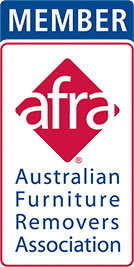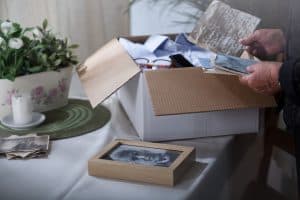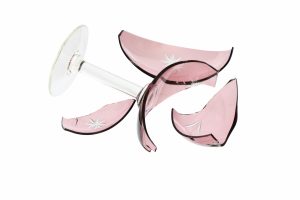Packing Guide

How to Pack for Your Move…
Where to Start?
A good packing guide should always start with the laundry, linen cupboards, and storage spaces under stairs, sheds, garages and carports. These areas can be considered quite difficult to pack up, so getting a start on the most time consuming and cumbersome spaces will reap rewards. You will have knocked off a lot of items from your checklist and you will have made space available to keep the boxes you have packed ready for moving day.
For the laundry, linen cupboard, garage and storage areas like those under stairs or in sheds; you will probably require two full days to adequately sort out your belongings in these areas. The time it will take will obviously depend on the quantity of belongings you will need to sort through and the number of areas to consider.
Packing Guide – Laundry and Linen Cupboard
Quite commonly many items in the laundry and linen cupboard may no longer be required for daily use. Ensure you have just what you need to live with for the amount of time you are remaining in this home. Take those items to the bathroom or bedroom and house them there until later in your moving schedule.
Other items in a common laundry may include old towels, stained or torn sheets and half empty bottles of cleaning products. Whilst these items may appear to have no use, rather than throwing them out consider using them to assist with the move. Old linen items such as towels and sheets can be used to wrap and protect valuables, we refer to these items as “wrapping linen” and you may locate other pieces of wrapping linen in other areas of your home.
Place your wrapping linen items in a garbage bag and clearly label. You can label a darker garbage bag by placing a piece of light coloured masking tape on the bag and writing the details on this with your black marker pen.
Cleaning solutions should be gathered into a bucket (or two) with any old cleaning cloths, at the ready for emergency clean ups. You will no doubt add to this cleaning bucket when you move to the bathroom and kitchen areas. These cleaning buckets can also be useful to clean up areas after your belongings have been packed ready for the moving day.
Towels, sheets and other linen that is to be moved will need to be packed and transported neatly and cleanly. Prepare your clean linen items by folding neatly and stacking on a bed or table. Prepare a box of appropriate size by lining it with packing paper. Medium sized boxes are best for linen as you can get quite a good amount in without the weight becoming too restrictive. Carefully place your neatly folded linen into the box, three or four items at a time, to ensure they remain neat and you are able to maximise the number of items in the box. Be mindful of the weight of your boxes.
Once the box is full place an additional piece of packing paper on top to protect your linen and tape up the box. Clearly label the box so you know what is inside and where it needs to be at your new residence. By taking the time to prepare like this you ensure that your linen can be taken straight from the box and placed into the new location without any additional effort. Boxes of linen are usually very sturdy too, so they can be loaded onto the removalist truck first.
Any items from the laundry or linen cupboard that are to be sold can be placed into a garbage bag and labelled for sale. Similarly any items from the laundry or linen cupboard that are to be donated can be placed into a different garbage bag and labelled for donation.
Packing Guide – Storage Areas
Storage areas under stairs or in sheds or garages may have seasonal items like the Christmas tree and decorations or camping equipment. They may also contain items you have been meaning to deal with but have not had the time or inclination to do so. Consider carefully what you are going to do with these miscellaneous items. Do you need to take them with you? Can you fix them? Will they be useful for any part of the move or your new place? Can you sell them? Can you donate them? Are they simply not useful in any sense and can be thrown out? Decide what needs to be done with these miscellaneous items and add them to the bags you have prepared from your laundry and linen areas.
Any items that are to be kept from the storage areas can be packed up at this stage as they are not required for immediate use. By cleaning out your storage and linen cupboards first you can place your completed boxed up items back away ready for the move. Likewise as you proceed through the clean-up and pack up of your garage and/or shed, you can store other items out of the way.
Packing Guide – Sheds, Garages, Carports
Sheds and Garages or Carports usually also contain many varied items. Tools, lawn mowing equipment, hobby equipment, camping or surfing gear, bikes, “spares” like paint, oil and chemicals like pesticides, etc…. the list will be varied. Once again consider what you really need to be taking with you; what can be donated, sold or disposed of. Certain items like pesticides, oil and gas are considered too dangerous to transport so you will need to make other arrangements for these items.
Whilst you are sorting through the shed and garage, categorise your items into groups to make packing them up simple and easy. Look at grouping items together that are of a similar shape where possible. Gardening equipment for example can be grouped together depending on the size and shape of items and wrapped securely and boxed up.
Tape or tie items together like brooms, rakes and brushes. These items will not require boxing up due to their shape. They can be wrapped in a removalist blanket on moving day and packed securely into the truck.
For general tools like your screwdrivers, hammers, handsaws etc. keep these in your toolboxes where possible. If you do not have a toolbox, choose a strong, sturdy small box. Also be sure to remove sharp blades from objects that are dangerous and use adequate padding for protection – not only to protect yourself but also the equipment. Use any old towels from your linen wrapping supplies and bubble wrap to provide protection to these objects. You can additionally secure the padding by using ties or string to ensure the item remains securely wrapped.
Tools will need to be wrapped in newspaper prior to placing them in the box if they do not have their own boxes. Power tools should have their attachments removed, oils drained and be packaged in their original boxes if you have them. Otherwise wrap the cords around the body of the tool and wrap these in bubble wrap individually, secure the wrap with a tie.
Once you have sorted out tools and wrapped them with caution, select an appropriately sized box for the items being mindful once again of the weight going into each box. Ensure you place several layers of tape on the bottom of these boxes to ensure they are secure on the base, ready for the weighty items to go in. As you place your items into the boxes, use scrunched up newspaper and other junk mail to fill gaps and act as cushioning between items as you go. When the box is full, once again double tape and label with a description of the boxes contents and its location.
For bikes, camping gear and hobby equipment, if you have the original packaging for these items then use those. Otherwise consider how best to pack and transport these items. Bikes can generally have wheels and handlebars removed. They can be protected on moving day with removalists’ blankets.
Should you need to remove any screws or nuts and bolts from items it is a good idea to place the items removed into zip lock bags, label them and tape them securely onto the item where there will be no resulting damage from the tape or screws inside the bag. Once your move is complete it will simply be a matter of unwrapping everything and putting it back together.
Fuel or gas powered machinery such as lawnmowers and chainsaws will need to have the fuel drained prior to moving. If you are going to require these items between now and moving day leave this stage for the weekend prior to the move. Once the fuel has been drained, give your machinery a quick clean up ready for the move. Any grass clippings or other debris should be disposed of now.
Packing Guide – Outdoor areas, Patios, Decks, Pergolas
Next consider your outdoor areas, patios, decks and pergolas. Commonly outdoor furniture, pot plants and additional seating or storage boxes and other gardening items will be located in these areas. Consider cleaning up your outdoor table and chairs, stacking the chairs into the garage if space permits.
For plants you will need to consider the size and speak with your removal company to see if they are able to move them safely and securely for you. The size of your plants will really dictate what can be done in the particular circumstance you find yourself in. Smaller plants being transported across suburbs can probably be boxed up carefully and taken in your own private vehicle. Larger plants in larger pots across suburbs may require the use of a ute and some strapping to transport them.
If you are moving interstate then a discussion with the removalist will be necessary to find out how they can accommodate your plants and pots. Regardless of how they are to be relocated, a good wash down and clean-up of the pots themselves will mean less garden waste is moved from one house to another. Consider any pruning and remove dead leaves from the plants to make sure they are in good condition to survive the move. If they are on their last legs then perhaps you are wasting your time, so you may need to be a bit ruthless, after all how much time can you devote to this task? When arriving at your new destination with clean pots and neat looking plants, you will be glad you took the time to clean them up to add that homely feel to your new residence.
The charcoal and gas for your BBQ will need to be disposed of prior to moving. Prepare your BBQ by dismantling any removable pieces and securing them as best you can. Depending on the size and style of your BBQ there will be options available when it comes to safely moving these items. Refer to the manufacturer’s instructions for your particular BBQ to ensure you treat it properly and to ensure no damage occurs during the move.
Packing Guide – Bedrooms
Bedroom spaces generally contain personal items such as clothing, shoes, and books, bedding furniture and perhaps a desk and chair. The easiest way is to begin by sorting through the wardrobe of clothes, shoes and other incidentals that may have crept in. Also go through any sets or drawers, tallboys and storage cabinets in each bedroom. Start with the clothes, then move to shoes and finally other incidentals.
Any items of clothing that have not been worn in years are more than likely surplus to requirements. If these items are in good condition, consider selling them or donating them. Any items that are dirty, stained, broken and are unlikely to be repairable can end up in one of two places. Either add them to your cleaning bucket or wrapping linen supplies. From the remaining items, with consideration to the weather, think about grouping your clothing into seasons and then this will make the packing process easier. Items that are currently out of season can be prepared for packing, leaving the items you currently wear available for the next few weeks.
To prepare your clothes for packing there are two schools of thought. Some people prefer to use space bags, the ones where you load them up with your neatly folded or laid out clothes and suck out all the air with the vacuum cleaner. Otherwise you can fold them or roll them and box them up like you did with the towels and sheets in the linen cupboard. Whichever way you choose to go, be sure to only pack away clean clothes. Packing heavier items like jackets and specialty clothing may require specific packaging or bags. If you do not own these yourself, consider borrowing from a friend or relative for the move. Protecting your clothing is just as important as protecting your furniture.
Shoes can also be sorted through using the same idea. Box up the pairs you will not be wearing for a few weeks and that will be another job sorted! Shoes can be packed in packaging paper to protect each pair from the others or even bubble wrapped. Expensive shoes can be packed up in their original boxes if you have them and then packed into the moving box. Once you have a full inventory of your shoes you will be in a better position to know what is the best option for your particular group of shoes.
Any other personal items within the bedroom spaces will obviously be dependent on the age and gender of the person whose bedroom it is. Children for example will no doubt have toys, teenagers perhaps books and desks, females may have jewellery and perfumes – consider what needs to be kept for daily living as you look towards moving day. Excess items can be sorted and packed in advance.
Packing Guide – Bathrooms
Consolidating the items in each bathroom should be a fairly quick job. Take everything out from under sinks and inside drawers. Look at what you will need for the immediate future – items like toothpaste, toothbrushes, soaps etc. consider keeping these daily items in a toiletry bag on the top of the bathroom benchtop so it is easy to grab and take with you on moving day.
For all other items, if they are cleaning items, add them to the bucket of cleaning products you began in the laundry. As the bathrooms contain many liquid items that can pose a sticky mess at the end of a move, check to see which items are completely sealed and which items pose a threat of leaking or other damage. To ensure your lotions and potions are safely transported use plastic wrap to cover and seal any open bottles. Simply unscrew the lids and wrap the plastic wrap over the top and then reseal with the lid. This method can be used on shampoo and conditioner bottles, toothpaste, foundation, moisturisers and even cleaning products.
Powdered cosmetics can be secured by placing a cotton wool ball on top of the powder and replacing the lid. Ensure all lids are tightly secured and again group items of similarity together, wrap in paper or bubble wrap if glassware, and box up neatly. Fill in any gaps with old junk mail or wrapping linen to ensure everything is packed in tightly and securely.
Living areas, Family Rooms, Lounge Rooms, Media Rooms
Living areas contain fragile homewares, photos, books and larger furniture items such as lounge suites, coffee tables, book cases and the like. As you have been doing, group items together that you will be selling, donating and keeping. Items that are going to be kept and moved can be packed at this stage.
Heavy items and fragile items will require strong sturdy boxes. Books are easier to pack into smaller boxes so the weight of each box is easier to manage, rather than filling larger boxes which will be heavier and more difficult to manoeuvre.
Fragile homewares, photo frames and precious items from your living areas will require protective wrap and cushioning between items when placed into moving boxes. Consider the “linen wrapping” you have collected from the laundry/linen cupboard/bedrooms and use a combination of bubble wrap, linen wrap and packing paper or newspaper to protect each item individually. Once each item has been carefully wrapped then consider how to arrange them in the boxes. Again, smaller boxes where possible are preferable for fragile items. Labelling fragile boxes is extremely important. Consider using a different coloured tape on fragile boxes to ensure they stand out from the rest. Moving safely and cautiously is the priority for these boxes.
TVs, Stereos and other electronic equipment are expensive items and you need to be particular with how these items are handles. Cables and plugs relating to this type of equipment can be tricky to reinstall, so take a moment to photograph how the cables are connected at the back of the TV and any players attached. Similarly with PC equipment, it is a good idea to have a photo of what the cables at the back looked like when the device was operating so you can easily recreate the connections when you arrive at your new destination.
In addition to photos, ensure the cables of these devices are neatly organised and tied together then placed in a zip lock bag and securely attached to the item where possible. Label the zip lock bag also, in case it becomes detached from the device.
Packing Guide – Kitchens
Prior to moving, it is a good idea to limit grocery shopping to the bare essentials. Look at what is lurking in your freezer – what can be pulled out and used now? Similarly with your fridge and pantry items, consider using up as much of your current store as possible rather than purchasing additional items. This will save money in the immediate term and reduce spoilage of items or throwing away good food because you ran out of time to eat it before the move.
Looking at the pantry, consider a quick clean out. Look at the use by dates on the items you have stored away. Anything that is out of date should be disposed of. Anything close to the date can be used for immediate consumption leading up to moving day. If you have dry goods that can be stored in airtight containers, consider consolidating these packets into the containers. This will ensure the goods remain in-tack for the move. Square edged containers here are obviously better than round ones as you can pack the containers neatly into boxes without losing space and having to pack spaces with paper.
Consider packing away tins, saucepans and items which you will not use daily in a pre-move pack of the kitchen. Try to pack as many infrequently used items as possible. This method can also help you with ensuring the items you move are the items you wish to keep. Anything which you have not used in the last few years, anything that is broken beyond repair and things you have outgrown can be given to charity or saleable items can be sold online or via a garage sale.
When packing crockery, wrap each item in packing paper if you can. Newspaper will result in dirty and marked crockery meaning you will have to wash everything when you unpack. Once the items are wrapped in paper, then consider how you are going to pack your box. Plates are actually better stacked upright as you would in a dishwasher. Glasses should have old socks placed inside them, be wrapped in paper and then bubble wrap prior to boxing.
Cutlery can be secured with a zip tie and then placed in a plastic bar or paper to protect both the cutlery and other surrounding items. Knives should be dealt with by adequately covering the blades with bubble wrap and taping, then wrapping up together. It is a good idea to write the word Knives on the paper so you know at the other end sharp items are inside and to proceed with caution.
Optimove Furniture Removalist
This packing guide has been provided by Optimove Furniture Removalists, the white glove and red carpet removalists based in Brisbane. If you need any other assistance please visit the other posts on this website written purely to help families and offices move locally and interstate.

































